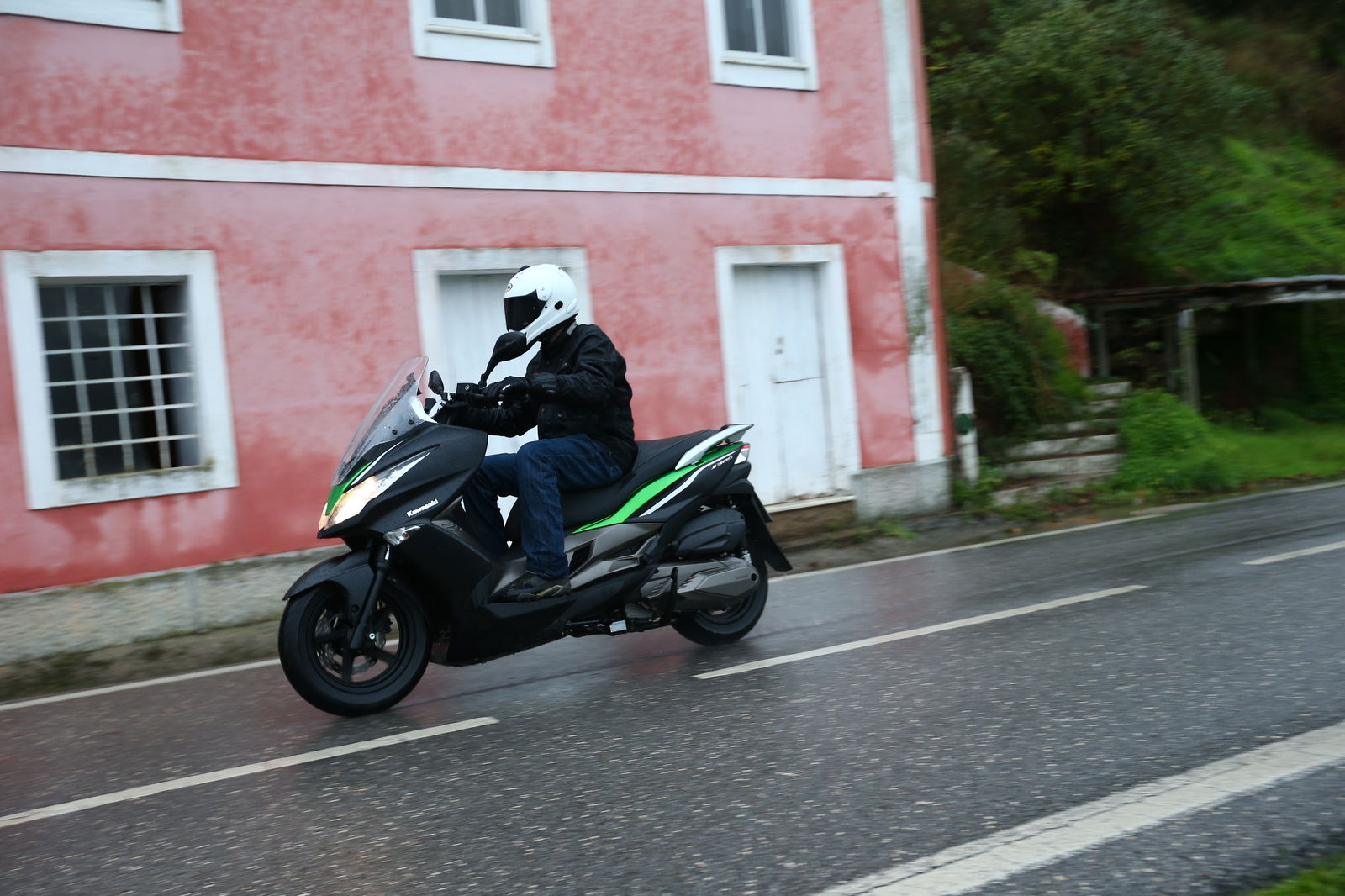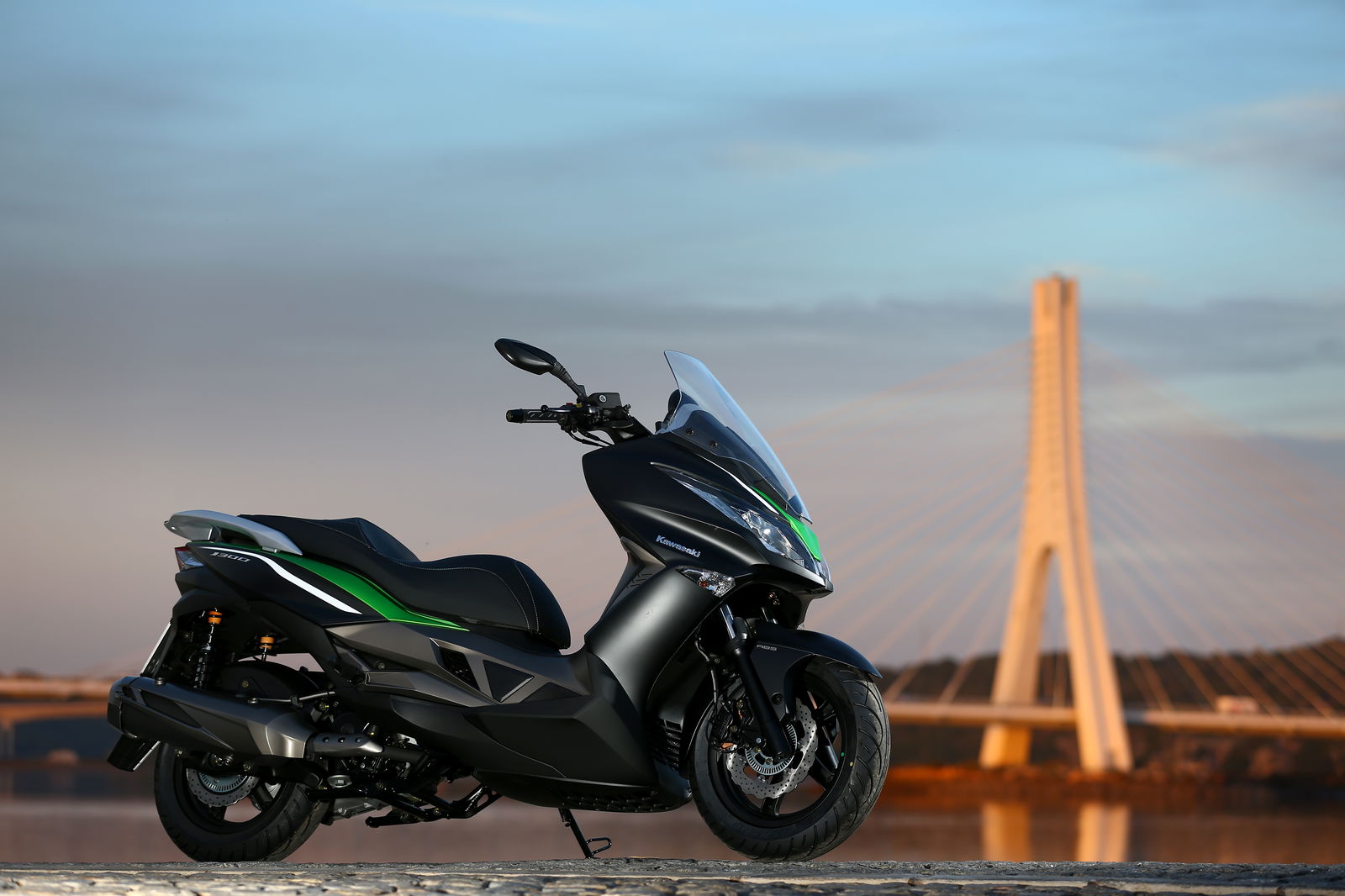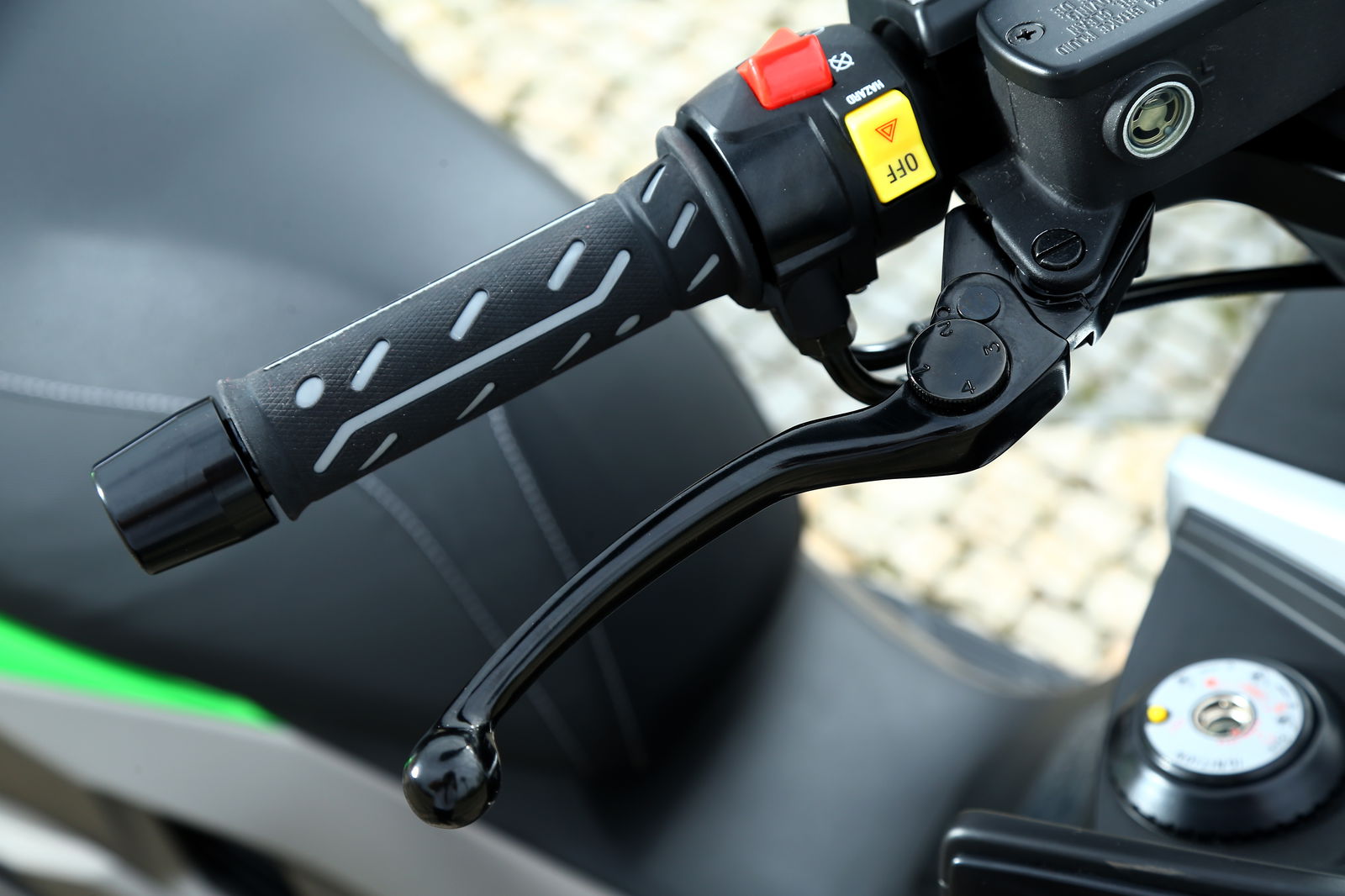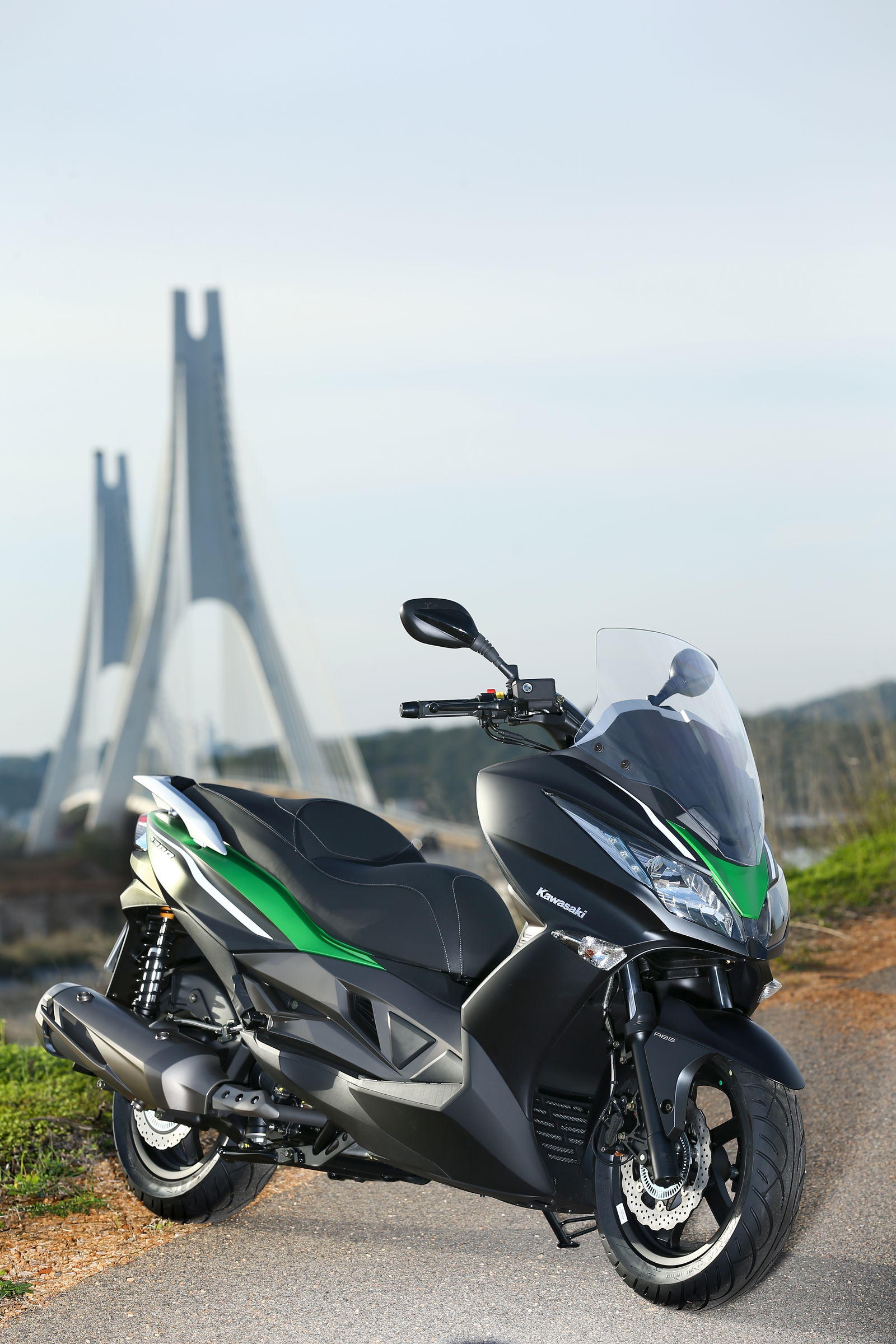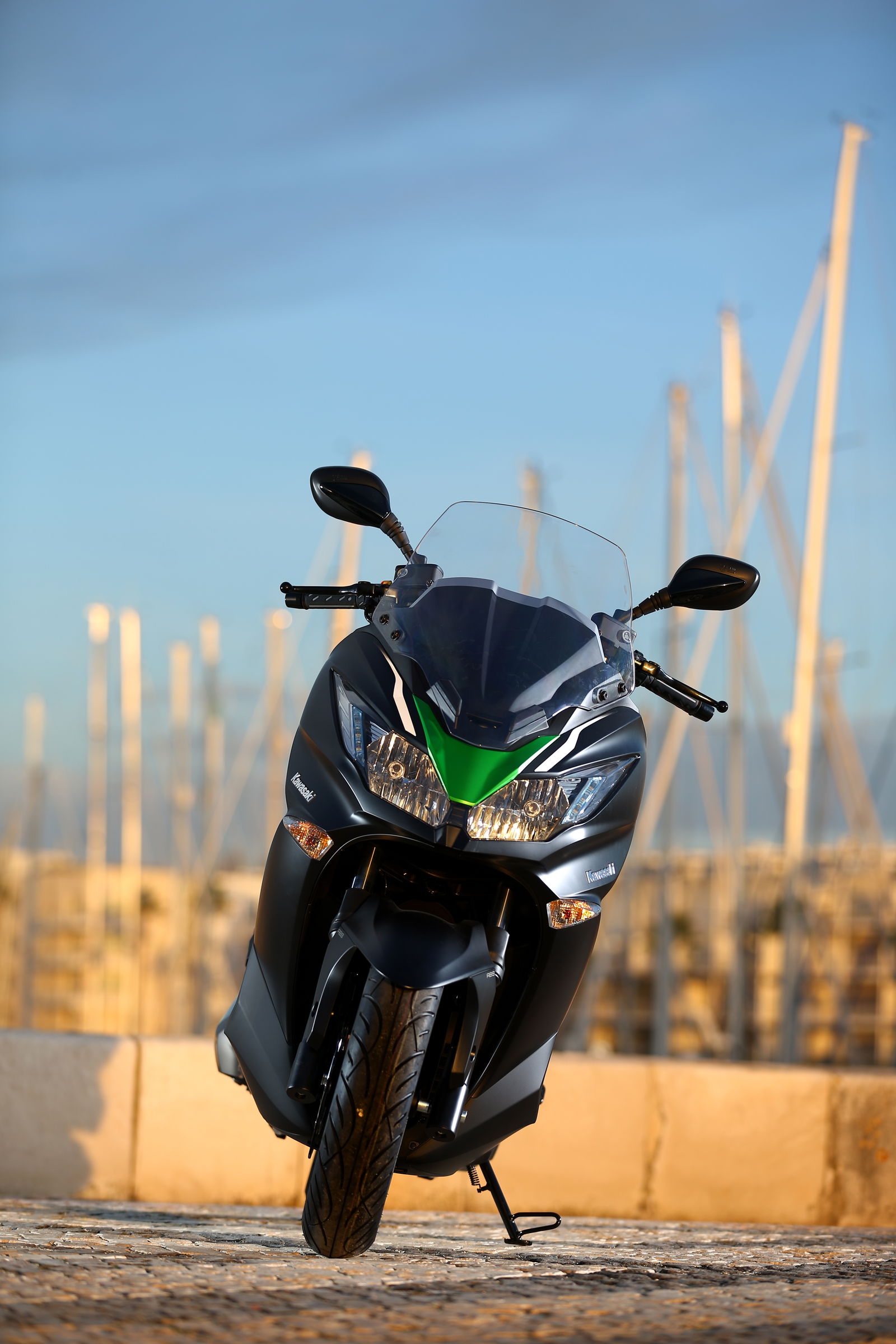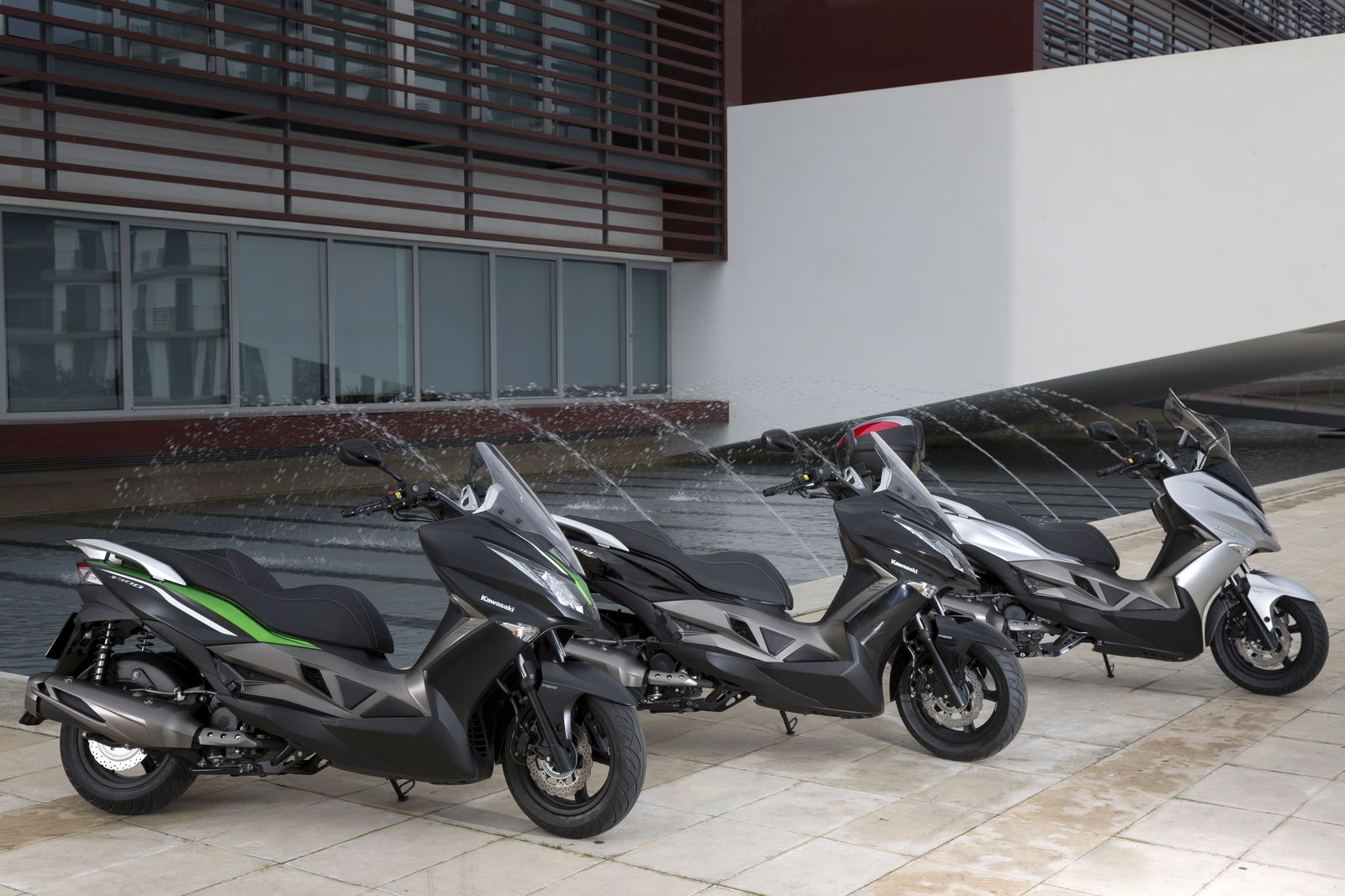First ride: Kawasaki J300 review
Scooter ownership just became a much more persuasive proposition


MOTORCYCLISTS in the UK consistently object to big scooters on grounds of price. It's seems a reasonable enough protest. It’s hard to justify spending around nine grand on a scooter when you can get a motorcycle that will perform the same functions for five. It’s going to take an awful lot of comfort, weather protection and under-seat storage to compensate for that. It’s a wonder they sell any.
Kawasaki has just changed that with its first entry into the European scooter market. The J300 offers performance not far off that of a maxi scooter for less than half the price.
Actually, it’s not quite true to say Kawasaki has just done it. Taiwanese manufacturer Kymco did it in 2011 with the Downtown 300i. Kawasaki has repackaged and rebranded it as the J300. It's clearly a brilliant scooter that largely passed under the radar, of the motorcycle press at least, because it was a Kymco. It must be a frustrating situation for a manufacturer, to have made a machine that’s as good or better than larger capacity rivals but which never receives proper acknowledgement because of a brand name.
Kawasaki recognised it for what it was and can now benefit from it. Kymco stand to sell more, albeit with Kawasaki branding. Everyone wins, including the consumer, who can now have an excellent scooter at an excellent price without feeling self-conscious about the brand.
Manufacturers’ claimed power figures can sometimes seem not to match the experience of riding the model. Some engines seem weaker than suggested. The J300 feels stronger.
The claimed figure is 28hp, five less than a Suzuki Burgman 400. I would have believed the J300 made 35. Automatic CVT scooters can lack a crisp throttle response, as though the twist-grip is connected to an elastic band. The J300’s is more immediate. There’s no waiting for the engine to wake up. Whack the throttle open and it goes, with surprising swiftness.
The rev counter gives an insight into how the CVT system gets the most from the engine. With the throttle wide open, the needle rises quickly to just over 7,000rpm, roughly where peak power lies, and stays there as speed climbs. Only at about 80mph, a happy cruising speed, does the rev counter needle begin to slowly rise again. Flat-out this 299cc single-cylinder scooter will touch an indicated 100mph, and smoothly, with minimal vibes. At 60mph there’s enough in reserve to confidently overtake. It feels much faster than Vespa's GTS Super 300, and closer to maxi-scooter territory.
Suzuki’s Burgman 650 costs £8,799 and does a genuine 101mph flat-out. The Yamaha Tmax’s top speed is the same, and it costs £8,699. Honda’s Integra 700 (superseded this year by the 750) does 98mph and costs £7,699. BMW’s C650GT and C600 Sport are a bit faster, at 111mph, but cost even more, at £9,795 and £9,495 respectively. The Burgman 400 is £5,515.
If we say the J300 probably hits a genuine 90mph, it’s still not a giant step down in performance terms. Certainly it’s enough to get by with, for anything from shopping to touring. And it costs £4,049 for a plain silver or black one, and £4,149 for the Special Edition, with a splash of Kawasaki green on matt black.
At the launch in Lagos, Portugal, Kawasaki presented a long list of things they’d changed on the model, mostly cosmetic but also including the brakes and ECU. But essentially it’s been given new clothes and you could get near-as-damn-it the same scooter for £3,999 by buying the Kymco. It’s that simple. The Kawasaki badge costs £50.
The J300 still seems a bargain. Its accomplishments don’t end with being fast. It’s also got a remarkably smooth low-speed throttle response. CVT can feel a bit on-off at walking pace but a gentle twist of the J300’s throttle feeds in power almost as smoothly as a clutch.
It’s no motorcycle. As with most scooters, handling is a bit on the vague side. A thickly padded seat probably contributes. On very wet roads, I momentarily thought I felt the rear tyre go sideways a fraction. Then I couldn’t decide whether it had been my imagination. Uncertainty is bad for the nerves.
It’s no sports bike at the other end either. The bars are high, in a comfortable position but not an optimal one for delivering feedback from the front tyre. One journalist concluded the front brake lacked bite. I think it just feels that way because the bars don’t transfer as much force to your arms as lower ones would.
But it seems unfair to judge a scooter on this criteria. People don’t buy them to explore the limits of adhesion and none would prove particularly adept at doing so. In as much as any scooter does, the J300 handles very well. It’s light for a scooter that goes this fast, at 191kg. The Burgman 650 is a colossal 277kg and even the sportier Tmax is 217kg. The J300 also has its petrol tank at the bottom of the chassis, with the filler cap in the foot-well, helping to keep the centre-of-gravity low. As a result it's easy to throw around.
It’s also extremely stable. I never detected a single nervous twitch or wobble, despite high speeds and bumpy surfaces. The suspension could be better at soaking up potholes. There are five preload settings, adjusted by turning a sleeve at the bottom of each of the twin shocks. It feels like adequate suspension on a budget, which is exactly what it is.
The biggest scooters let you choose your riding position, sitting to the front or back of the expansive seat, with legs bent or straight. The J300 isn’t that roomy. The seat slopes up at the front, so gravity leads you to a single position, against the soft bum-stop. It’s a very comfortable position. Because the bars are high, it can feel quite laid back. I had no aches after a day’s riding. The screen looks low but offers surprisingly good protection from the wind. I felt no need of more.
I have some small complaints. The glovebox is tiny, barely big enough for a compact camera, with a catch which you have to manually twist closed, so you can’t just slam it shut with a gloved hand. It’s redeemed a bit by the 12v power socket inside.
The under-seat compartment, made to accept one helmet and an ‘A4-size briefcase’ has a lamp which is activated by a light-detecting diode instead of a simple switch. So presumably, if you open it in pitch blackness, the light won’t come on. I'm sure Kawasaki/Kymco has thought it through.
There’s an ABS version but Kawasaki is not bringing it to the UK. Because the market for big scooters is smaller in the UK than other parts of Europe, they want to test the water with the non-ABS version first. It’s a fairly unfathomable decision. If people want the scooter, it follows that some will want it with ABS. Having no ABS option seems more likely to cost Kawasaki customers than win any.
And that would be a shame because people should want this scooter, including motorcyclists. It’s made the whole proposition of scooter ownership suddenly much more persuasive.
Update: As of January 21, Kawasaki has announced a limited number of ABS-equipped J300s will be coming to the UK following feedback from journalists. The J300SE-ABS will cost £4,499.
Model tested: Kawasaki J300
Price: £4,049 (£4,149 for Special Edition)
Power: 28hp
Kerb weight: 191kg
Seat height: 775mm
Colours: black, silver, black/green
Contact: www.kawasaki.co.uk
Read Visordown's first ride report on the Kymco Downtown 300i


